China 1000 BC to AD 618
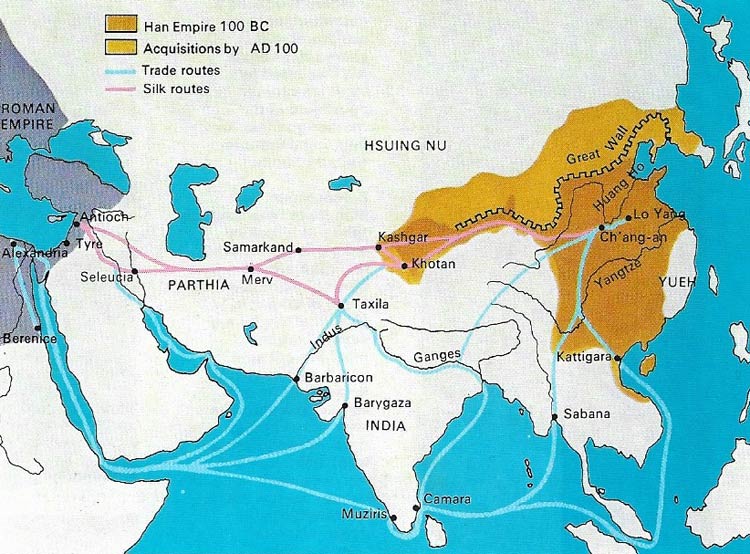
Figure 1. China expanded under Han rule, after unification by Ch'in. The growing silk trade had to be made secure, but Central Asia remained vulnerable to barbarian threats.
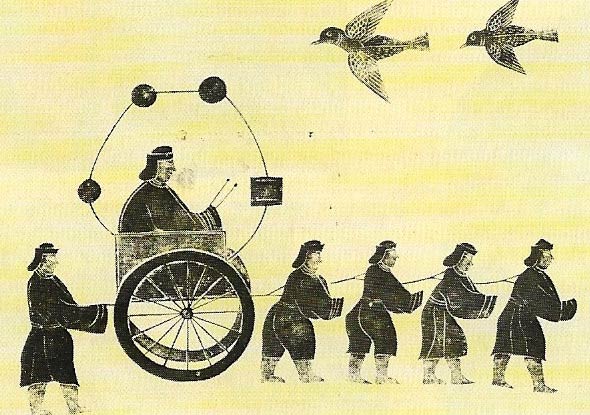
Figure 2. A Han official in his carriage is drawn by slaves. His attendant follows in the rear. During the Han dynasty a large bureaucracy was established to implement the growing powers of the state. The officials, usually nobles, were the product of the Confucian training of the official class. The Confucian ethical code required that the official class should possess wisdom, integrity, righteousness, conscientiousness, loyalty, altruism, love and humanity. Confucius insisted on the importance of education and training: "By nature men are pretty much alike; it is learning and practice that set them apart". The ruler's power could be forfeited.
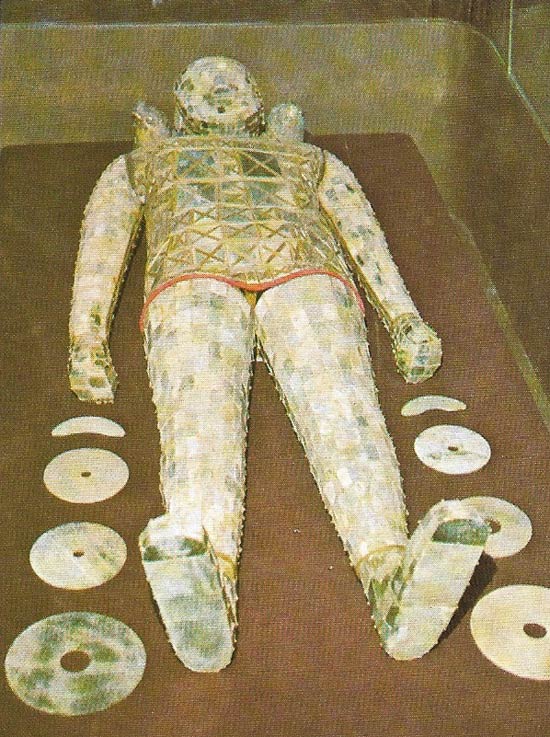
Figure 3. Princess Tou Wan was buried in this jade suit. She was consort of Prince Liu Sheng, who died some years before her, in 113 BC. Their tombs were accidentally discovered by some soldiers in 1968 in a cliff on the Ling mountain in the province of Hopei. The massive stone doors, which led to the burial chambers, were sealed by molten iron. The tombs were some 12.5 meters (40 feet) square and beneath the collapsed jade suits lay some ash, all that was left of the royal couple. Jade was believed to have magical properties of preserving for eternity anything kept in it. The suits were made in 12 parts so that they totally encased the body.
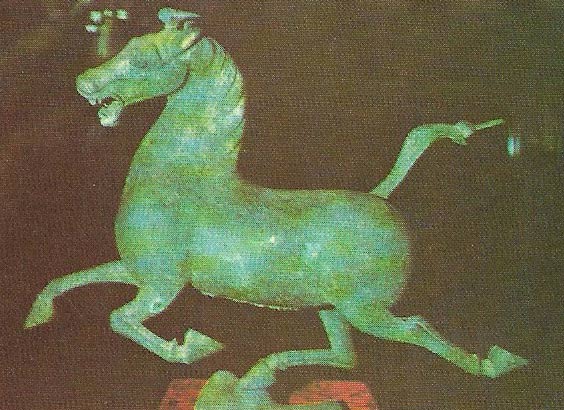
Figure 4. A celestial horse of the Han dynasty was excavated in 1969 from a tomb at Wu-wei in Kansu province. Flying horses were a recurrent motif on Han art.
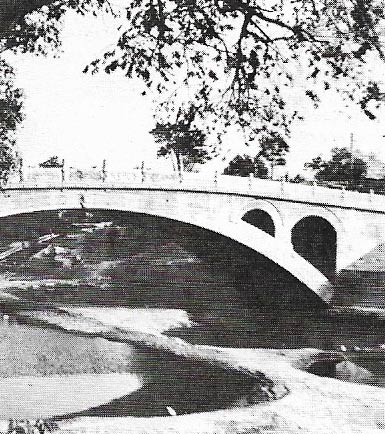
Figure 5. This bridge, at Anchi, built in AD 610, shows the remarkable sophistication of Chinese engineering, long pre-dating Western achievements. The building of canals and roads, needed for the transport of grain and the maintenance of peace, was fostered under Sui rule. The Grand Canal, built by forced labor, linked the Huang Ho and Yangtze rivers and connected the political centers of the north with the economically important Yangtze region.
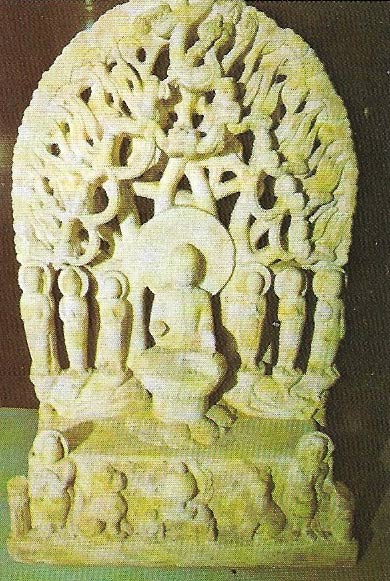
Figure 6. The Buddhist school of sculptures produced this white marble stele in the early part of the 5th century AD. It shows the Buddha Sakyamuni in a posture denoting him as the bestower of fearlessness. The Buddha is seated under some sal trees surrounded by his disciples and Bodhisattvas, including Ananda his favourite disciple, and Mahakasyapa, who became leader after his death. Above him float goddesses holding garlands of flowers.
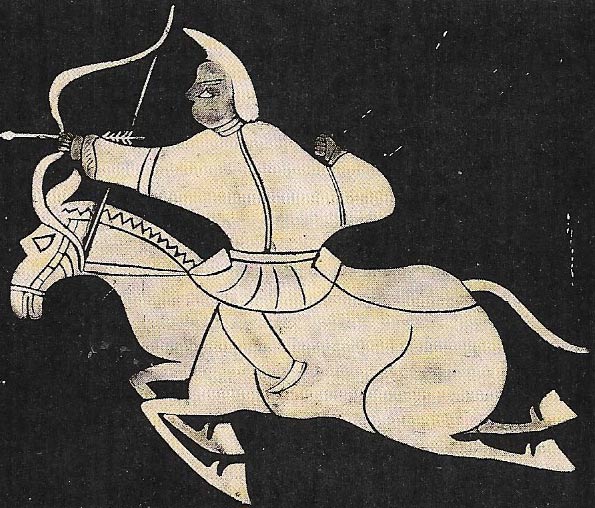
Figure 7. A rubbing from a Han stone relief shows a mounted barbarian archer at full gallop. The reins are looped on the horse's neck leaving the archer's hands free to loose off the arrow. Firing from the saddle he had great speed and mobility. Such raiders were a constant threat to the Han.
The Shang dynasty (c. 1600–c. 1030 BC), the first in the recorded history of China, was overthrown in about 1030 BC by a group of tribesmen from west China called the Chou. Their dynasty was to be China's longest, and its notable contribution to Chinese history was that it witnessed the birth and popular acceptance of Confucian philosophy.
The Chou and the Ch'in dynasties
The Chou period (c. 1030–221 BC) saw many important developments. The realm was extended to the sea in the east, the Yangtze River in the south and to the borders of Szechwan in the southwest. As this expansion continued, semi-independent states emerged which, although paying tribute to the emperor and his court, were more concerned with culture and religion than with political authority. The delicate balance of power between the emperor's vassal states finally collapsed and the "Warring States" period began (475–221 BC). During his period of violent struggle, philosophical and moral thought flourished and a new, educated class arose. Chief among the philosophers was Confucius (551–479 BC), whose teachings emphasized duties to the family and society rather than preoccupation with the dead. The influence of his nought signalled he decline of the old feudalism and began a tradition of close association between philosophical thought and political practice in China. This was also a period of great technological change. Iron superseded the use of bronze, especially in weaponry; irrigation improved harvests; and the invention of the breast harness vastly improved the efficiency of the horse.
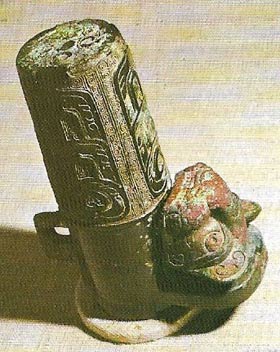 |
| A bronze axle-cap dating from the mid-Chou period (7th century BC). The linchpin that held the wheel in place is decorated with a tiger's head. Chariots from which such axles came would probably be ceremonial, or for state use. Although chariots were also widely used in warfare, they were reduced to an auxiliary role as the raids by the mobile, northern horsemen increased. |
Gradually the smaller and weaker states were absorbed by the militarily and economically stronger states, until the chief contenders were the Chou in the south and the Ch'in in the west. Eventually the Ch'in became supreme rulers and in 221 BC China was for the first time unified under Shih Haung Ti (259–210 BC), the "First Emperor".
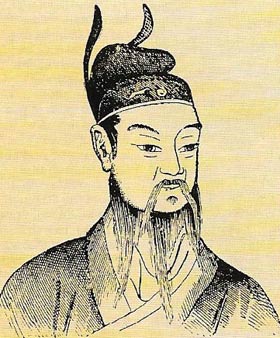 |
| Standardization of weights and measures was first ordered by Shih Haung Ti, first Emperor of all China. It was one of a number of measures to consolidate his rule, including standardization of the language, censuses and construction of a defensive road system. After his death taxation and the forced labour system led to peasants' revolts and the eventual collapse of the dynasty. |
He abolished the political system of the Chou and returned to the old feudal system, dividing the country into 36 provinces over which he set officials directly responsible to himself. He completed and strengthened the Great Wall, today stretching 2,400 kilometers (1,500 miles) from southern Kansu province to the coast east of Peking. The written language was simplified and unified over the whole country. Weights, measures and coinage were standardised, Shih Haung Ti is remembered as a despotic but practical emperor who burned existing literature, exempting only works on agriculture, medicine, pharmacy and divination. After the First Emperor's death the structure soon collapsed under the feeble rule of the second emperor who was murdered in 207, bringing the Ch'in dynasty to an end.
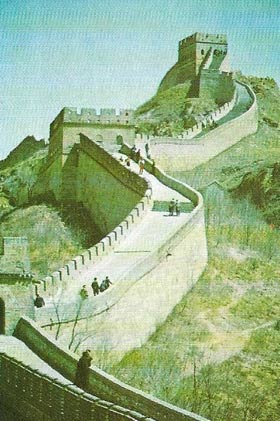 |
| The Great Wall of China was commenced under the Chou dynasty in the fourth and third centuries BC. It was designed to protect the Chinese people from attacks by the nomadic tribes who occupied the steppe lands in the far north and west. Building went on under ensuing dynasties and various sections of the wall connected until, during the Ming dynasty (1368–1644), it extended for 2,400 kilometers (1,500 miles). |
The Han dynasty: education and wealth
Out of the chaos that followed there emerged a successful candidate for the throne, Liu Pang (247–195 BC), who founded the Han dynasty in 206 BC (Figure 1). Initially the Han endeavoured to rule with the Ch'in system. But after about a century the principal of heredity local power was curtailed and candidates for local government were selected by open examinations (Figure 2). In 124 BC an Imperial University was set up for the study of Confucian classics; it's students were trained for government and rapidly increased until by the end of the dynasty they numbered nearly 30,000. Provincial schools were also established. Education and growth of the civil service was greatly assisted by the invention of paper, and ink and brushes replaced sharp writing tools. Under state patronage the arts revived and the early wealth of the Han dynasty can be seen fro mothering rich tombs (Figure 3). Most of the attainments of this period reflect the needs of a growing state of bureaucracy – engineers developed irrigation methods and water clocks, and sundials and seismographs were also invented.
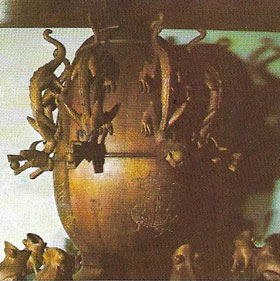 |
| The earliest known Chinese seismograph depicts eight dragons, each holding a ball in its mouth. Around the base of the vessel sit eight toads with open mouths. An earthquake at any point of the compass causes the dragon facing that direction to drop the ball it is holding into the mouth of the toad below, thus indicating the direction of the tremor. This instrument was invented during the Han period by a famous astronomer, mathematician, poet, and writer, Chang Heng. |
Until this time there had been little contact between China and the outside world, but under Han rule the empire was extended. Caravan routes were opened up, including the Old Silk Road which followed a chain of oases skirting the foothills of the Tarim basin. China sent ambassadors abroad along with its ever-popular silk, and products were exchanged as far afield as the outposts of the Greek world. Ideas travelled with the trade, most notable of which was Buddhism (Figure 6), introduced from India under the Han and which by the 7th century had become a major force in China. Under the Ch'in and the Han, China for the first time became a great state. But the mandarins, so carefully picked by scholarly examinations, became corrupt and sided with the great landlords in their oppression of the peasants. The Han dynasty was brought to an end by widespread revolt in AD 220.
Disintegration of the empire
During the next three and a half centuries there was a succession of short-lived ruling dynasties. It was not until AD 581 that the country was at last reunited under the Sui dynasty. Prosperity increased, taxes were reduced, irrigation improved and public lands were distributed so that each family had some land of its own. But the extravagant second emperor increased taxation. In AD 618 he was assassinated by one of his officers, Li Shih-min (Emperor Li Yuan), who founded the Tang dynasty.
